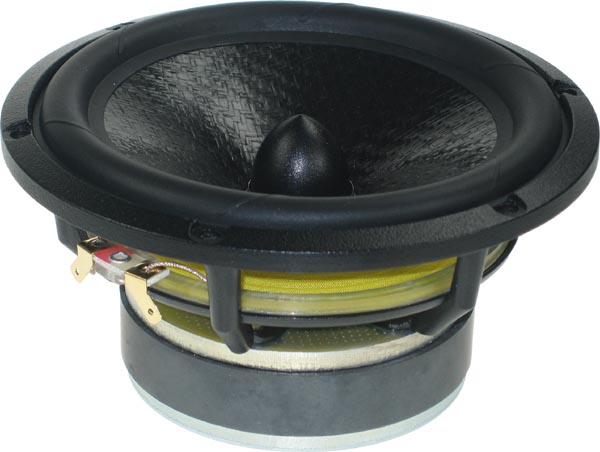
After modeling what feels like a hundred mid-woofers, I have decided on the drivers for a new active two-way speaker. It will, of course, use a miniDSP as crossover, but this time I am going to use it in “preamp” mode, and furthermore add the miniAMP module.
The aim of the project is to see what I can come up with that is along the lines of a “lifestyle” system but which also satisfies some fairly demanding “audiophile” requirements. The idea is that it isn’t going to have to be placed out into a room – as many of you probably know, the reaction your female friends have when you suggest that if they are asking you about getting better quality sound, they might need to put speakers in the middle of the living room, is along the lines of, “Well, that might be OK for you…. what about something on the wall just here” (and then they gesture to the corner of the ceiling…)
Usually, I just give up and let them go and buy the little Bxse system they have been told is the best. But when this happened again recently, I thought to myself, well, with a miniDSP and miniAMP (and, possibly, a miniDIGI) an enterprising DIYer could make something exceptional that would work in that type of situation. A single box would house all of the electronics and be quite small. The power supply could be built in or a 24V wallwart used. You could even go as far as building an Airport Express or AppleTV or similar device into it so that you could stream audio directly to it over wireless.
So, in thinking over this, I’ve come up with two configurations that seem worth pursuing. One is a sub-sat (2.1) system, which I’ll be describing in a different post. That’s the “can’t the speakers go on the wall?” scenario. The other is a two-way system, and I think this one really could be something special. The configuration is a small narrow floorstanding cabinet for the woofer, with the “tweeter” suspended above the cabinets. This makes the “big ugly boxes” relatively not, and makes the overall thing somewhat more attractive (I hope – we will see!).
Before looking at the drivers, I need to consider how much power I can drive them with. The miniAMP can be configured in three ways:
- 4 x 10W into 4 ohms
- 2 x 20W into 8 ohms
- 1 x 20W into 8 ohms and 2 x 10W into 4 ohms.
For a two-way system, the obvious choice is (1). Another would be option (2) for the tweeters, and a separate amp for the woofers. However, I wondered if it would be possible to use two miniAMP boards with one miniDSP board, and a query on the miniDSP forum confirmed that this can indeed be done. So that’s the configuration I’ll proceed with, a total of 4 x 20W into 8-ohm drivers. This has an interesting consequence, which as that since the miniAMP boards are being used in bridge mode, the electrolytic DC blocking capacitors on the amp outputs are not used. I don’t know whether it makes any difference sonically, but it’s a possible limitation that’s now simply (and literally) bypassed.
So, on to the drivers. For the physical configuration I wanted, it’s not really possible to use “just any” tweeter – so what I’m using is the Aurasound NSW2-326-8A. I have wanted to find a way to use this little driver for a while now. With 3mm of Xmax, it’s more like a full-range driver that doesn’t go very low than it is like a tweeter.
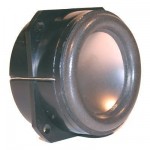
You might wonder about the quality of a driver that only costs $20 or so, but since Siegfried Linkwitz uses it in the Pluto loudspeaker, I see no reason to be concerned. Here’s the simulated response curve in a small (0.3 liter) enclosure, driven by 20 Watts:
With a -3 dB point of 275 Hz, the driver can be crossed over much lower than any tweeter. With 20 W of input power, the driver never exceeds its specified Xmax limit (shown as the red line in the diagram above). In Pluto, Linkwitz uses a 1 kHz crossover with a more powerful (50 W) amplifier, but with this speaker and less power on tap I will be trying lower crossover frequencies, and thus help to balance out the power used by the tweeter and woofer. The distortion curve provided by Aurasound (below) shows that distortion rises about 15dB from 700 Hz down to 300 Hz, so I’ll be trying crossover frequencies in that range to try and find the best audible result.
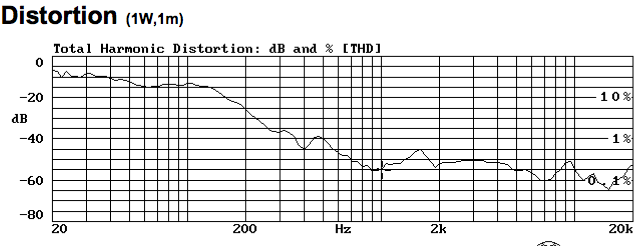
Now for the woofer. With only 20 W of power available, it can’t be too inefficient – as smaller drivers do tend to be. Good output down to 40 Hz is needed so that the speaker doesn’t have to be supported by a subwoofer. Box size is a bit of an issue, although since I’ve decided on a (compact) floor-standing speaker, it’s much less of one than it would be for a desktop or shelf-mounted speaker.
I simulated many drivers to figure out what to use, and of course did my searching on the Net to find comments, measurements, and so on. A great resource in this was the large collection of measurements on John Krutke’s site Zaph Audio. I looked at drivers ranging between 4″ and 8″ in size, and about $20 to $110 each in cost. (Any higher and the cost of the woofers is getting out of proportion for this project.) In the end, I decided on a driver in the middling-expensive part of the range, the Seas U16RCY/P.
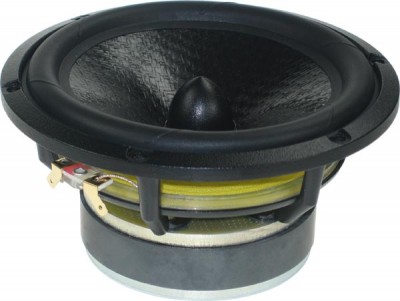
This is an interesting driver – although nominally a 5″ driver, the U16 has 99 cm2 of cone area, more than the typical 80 cm2. But the small frame enables us to keep the cabinet quite narrow, which helps with the domestic acceptability requirements. Its distortion performance at low frequencies is good for this size of driver, per Krutke’s site. Here is the simulated response curve with 20 Watts, in a 14 liter ported box tuned to 38 Hz:
I’ve set the box size and tuning to give a gradual rolloff in response. The output produced by the port is the light green line – you can see that its peak output is several dB lower than the output produced by the driver in the midband. This is partly to help match room gain, but also because, as mentioned above, the speaker is likely to be close to the wall. Also, I intend to build the port as part of the box structure rather than using a tube, and put the opening right on the floor, to take most advantage of the available output at low frequencies.
With around 100 dB maximum output, the walls won’t be shaking, but the speaker should produce clean solid bass at normal listening levels. The driver excursion at 20 W is shown by this graph:
The 4mm linear Xmax is slightly exceeded at full power in the 45-80 Hz region. The woofer has 10mm maximum mechanical excursion, so this is fine. At around 34 Hz, Xmax is reached again and excursion increases rapidly below that, so I’ll use the miniDSP to roll off the power below about 30 Hz.
In terms of cost, the project works out at a little over $200 for the drivers, and $210 for the miniDSP and two miniAMPs. Plus shipping/postage. Plus the power supply, and materials and parts for the electronics chassis and the speaker cabinets. Let’s say around $600 to $650 all up if we’re careful and use sensible (not boutique) parts. Considering that that includes the amplification and the ability to tailor the system with the miniDSP, that’s going to be an astounding value if it performs as well as I am expecting it to.
While the project idea originated with the constraints of placement and “domestic acceptability,” this has turned into something quite exciting that will (I think) also be capable of satisfying fairly demanding audiophile expectations (within room size and output level limitations). We will see 🙂
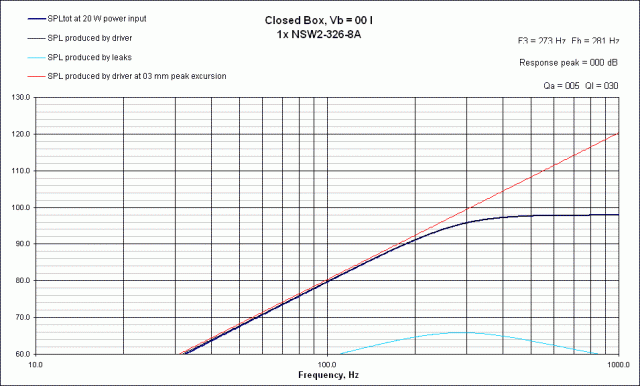
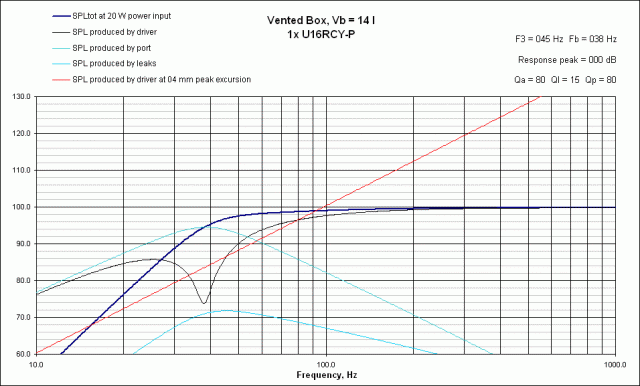
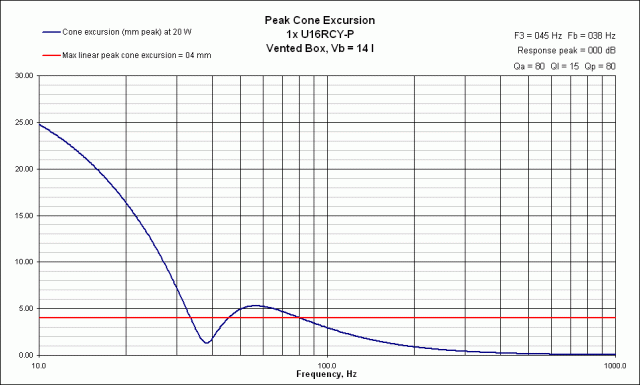
1 Comment